Goa is a state
located in the western region of India, it is bounded by the state of Maharashtra to the north, and by Karnataka to the east and south, while
the Arabian Sea forms its western coast. It
is India's smallest state by
area and the fourth smallest by population.
Panaji is the state's capital, while Vasco da Gama is
the largest city. The historic city of Margao still exhibits the cultural influence
of the Portuguese, who first landed in the early 16th
century as merchants and conquered it soon thereafter. Goa is a former
Portuguese province; the Portuguese overseas territory of Portuguese India existed for about 450 years
until it was annexed by
India in 1961.
Goa is visited by large
numbers of international and domestic tourists each year for its beaches,
places of worship and world heritage architecture.
It also has rich flora and fauna,
owing to its location on the Western Ghats range, which is classified as
a biodiversity hotspot.
The state of Goa is abundant and rich in people, culture and festivals. Being
an immensely multi-cultural state,
its festivals and
people are numerous and various.
Goa, a former Portuguese territory, for
more than 450 years is often described as 'The Rome of the East'. It has over
the past decades, become the dream holiday destination, for many a foreign
tourist. More than 40 years after the departure of the Portuguese, Goa is
perhaps the most westernized of all the states in Modern India.
One of the things that make Goa unique,
are the laws, a legacy that the Portuguese have left behind. The common civil
code, confers equal status to all religions, it favors no particular religion.
The law also accords equal legal status to both sexes, in all matters.
Goa's rich cultural heritage comprises
of dances, folk songs, visual arts, music and folk tales rich in content and
variety. Goan are born music lovers, most Goans can pluck at a guitar or pick
out a tune on the piano. Goans are very proud of their state, and are well
prepared to fight for its protection.
THE PEOPLE:
Goans, that's how
people of Goa love to address themselves. In contrast to the prevalent
traditionalism in the rest of India, flamboyance marks the character of Goans.
They are friendly, full of life people and nothings seems to dampen their
spirits. The holiday spirit of Goa reflects in their attitude. They are easy
going people and don't believe in getting into rat race. Most Goans practice
'siesta' i.e. pull down the shutters from 1 to 4 pm and retire in the
afternoon. Long isolation due to Portuguese occupation and Sahyadris range on
land has led to this distinct identity of Goans.
In Goa, 65%
population is Hindus, 30 percent Christians and rest are Muslims and others,
but the culture of Goa is a far distinct identity from any of these religions.
Proud of their land, they consider themselves first Goans and then Hindus or
Christians. Culture unites them and they respect their religion as well as that
of others. Religious fundamentalism is something unknown to Goans. You can feel
this unique religious harmony at quite a few places of religion such as Damodar
temple at Sanguem, the Church of Our Lady of Miracles in Mapusa, the
Shantadurga temple at Fatorpa where both Hindus and Christians offer their
prayers. They even participate with great enthusiasm in each other's fairs and
festivals.
GOAN'S
OCCUPATIONS:
When
was the last time you bought a garment woven on a hand loom? Have your children
eaten ushichem god? Do you even know what it is? Do your
children know how your grandparents or our parents lived and worked?
We need
this sort of documentation in our topsy-turvy world, where we’re proud of our
heritage, yet like to adopt the conveniences of modern technology. Our
television-fed knowledge is enough for running our time-starved lives. Or so we
believe until we feel a longing for eating dried shark and can’t find it in the
market. “Can’t find a good white-washer these days,” we grumble to our
neighbours, “Nor a good pig… pork doesn’t taste the same as it did when we were
young.”
We need to know what our roots were and why we eat or do or use
the things we take for granted in our daily lives. Where does organic
unpolished rice come from? How is pure virgin oil extracted from coconut flesh?
What was used to raise bread-dough before yeast was available in supermarkets?
The salt that isn’t in packets, how is it made? Who harvests coconuts? How is
cashew-feni really made? What’s a shendri? What’s a kallem?
Baker....... known as "PODER"
Early mornings, throughout the villages and towns of Goa, The
soul rending bugle of the dreaded breadman can be heard. Listen!
"PAOPAOPAO!" That clarion call echoes insistently across the paddy
fields. Was it really all that long ago, when sleepy villagers would wake
up to the honk of the poder? When the narrow bylanes in the towns carried the
warm aroma of torrad unde, laadi pao, katrayache pao, poyi, kakana and faati –
all being freshly baked at the bakery where some friendly local guys – would
hurriedly push in neat balls of dough into the earthen furnace and pull out
hot, golden bread which fell straight into the round cane basket? Is it really
an old story? Perhaps yes.
Indeed, it needs skill to bake good
bread and today’s pao or unde no longer taste or smell the same. Local poders
who came on bicycles twice a day are becoming nearly extinct. If at all a
handful of them still do come on bicycles calling out “Bai” and “Patrao”, their
tone is no longer the familiar Goan one. Traditional bakeries are fast being
replaced by modern “cake and bake” shops that serve oven-cooked cookies and
loaves of so-called healthy brown or wheat bread – to a generation that grew up
on yeast and madancho sur, mixed undo that melted in the mouth and tasted just
heavenly when dipped into , leftover bangadyanche humon, chanyacho ros or
masuriche tondak.
Goan Fishermen….. known as “NISTEKAR”
The Kharvi, who are also known as Koli, are a
community found in Goa. Some are Christians, while
others are Hindus. They have various sub-groups, among which are the
Arrikars, Kantaikars, Magkars, Pagelkars and Ramponkars. They are distinct
from the Gabit community found mostly in northern
Goa, although they share a similar traditional occupation.
Found chiefly in the coastal talukas of Mormugao, Salcete and Tiswadi, the Catholic Kharvis generally speak
the Konkani language but
some use Portuguese.
They write Konkani using Roman script. Arranged marriages are common
but not prevalent, and monogamy is practised. The traditional joint family arrangements are
increasingly giving way to the nuclear family. Their principal diet is rice
and fish curry but meat and vegetables are also important constituents.
While the Kharvis are traditionally a significant group among the
fishing community of Goa, many of the younger generation have moved away from
that occupation and also from the area. They are increasingly to be found
working in Europe and the Gulf countries, from where they send money back to
their families in India. The traditional modes of fishing in Goa have
increasingly been supplanted by mechanised methods and the investment required
for this, plus the gains to be accrued, have led to an influx of non-Kharvi
communities to the industry. This shift to mechanisation has been encouraged by
both the national Government of India and
the state Government of Goa since
the 1970s, and it had first become evident after the annexation of
Goa by India in 1961. Those who
remain in Goa as fishermen — the women sell the fish and also work as
agricultural labourers — operate in groups of around 25 people. These
groups are named and fishing licenses are granted under that name rather than
to individuals. The groups share a common fishing vessel and nets, as well as a
communal shed, and their catches are divided equally between the members.
The
Khumbar:
The age of usage of baked pottery gave
importance to the work
of potters.
Whole villages of potters were usually assembled around the source of clay. The
clay was shaped and moulded on the wheel which was spun manually, the clay product, wet but finished was dried and
then baked in a kiln of firewood. Popular among these clay products were
"Kunni" - round, wide mouth vessels,
"Bhutkule" - pots, Mattulam - small, flat or deep bowls,
"Koddem" - deep wide round vessels, also a lot of decorative and
useful items were also made and graced every home.
The Chamar
Wooden clogs gradually made way for the
lighter and longer lasting leather footwear. the
cobbler sole craftsman of his trade with a sharp blade needle, greases and
slabs of leather fashioned footwear, made moulds and designed simple but
wearable patterns for feet that had a lot of walking to do. The chamar used to go house to house
repairing and taking measurement for new footwear
or could be found a little distance away from the tinto plying his trade.
The Mahar
Using material like bamboo and cane and using
only his hands the mahar, made a variety of products. Baskets, cages,
"Konde" - covered high baskets for storage of grain and onion. Wider spaced baskets were woven to
cover roosting hens and chicks. Small square, flat baskets to carry flowers were
made and used mostly in hindu homes. A triangular open ended "Sup"
was used for dusting the husk form rice. These were among the few, everyday
items made and sold in bulk.
The Barber
The busiest trader, the barber usually sat
under a tree or a makeshift
shelter.
Homemade oils for a relaxing massage, a sharp and shiny blade, a wooden or
tortoise shell comb, a scissor and a small mirror which was usually held by the
customer whilst the barber snipped and shaved away. He also went over to the
houses to perform the task and this usually was at the more affuent homes. Other traditional Goan artisans include Shetty
(goldsmith), Zo (idol makers who sculpt statues of wood and ivory). Chari
(blacksmith), Chittari (Lacquer work artisan), Kansar who makes brass lamps and
copper vessels.
Some of the significant specialties of Goa are listed below :
Goan
Cuisine
Goan cuisine consists of regional foods popular in Goa,
an Indian state located along India's
west coast on the shore of the Arabian Sea. Rice, seafood, coconut and local spicesand
vegetables are some of the traditional main ingredients in Goan cuisine. The
area is located in a tropical climate, which means that spices and flavors are
intense. Use ofkokum is another distinct feature. Goan food
is considered incomplete without fish. It is similar to Malvani or
Konkani cuisine.
The cuisine of Goa is influenced by its Hindu origins, four hundred years of Portuguese Empire, and modern techniques. The
state is frequently visited by tourists for its beaches and historic sites, so
its food has an international aspect.
Some of the significant specialties of Goa are listed below :
1. Bebinca :-
This is Goa’s most famous
sweet. This dessert is a multi-layered cake made from egg, coconut milk, sugar
and ghee. Cooking a perfect bebinca is considered an art form. A lot of
patience is needed at the time of its preparation as the next layer can only be
added once the previous layer has been cooked. Each layer is cooked in the oven
until it has a light fudge consistency. This can be eaten hot or cold and is
traditionally served at Christmas.
2. Ambot Tik :-
In Konkani, ‘ambot’ means spur and ‘tik’ means
spicy. As the name suggests, the dish is slightly sour and pungent. It is a
delicious gravy dish that is usually prepared from dried red chillies,
peppercorns and tamarind. The fish used is normally shark or catfish and it
tastes great with plain steamed or boiled rice.
3. Crab Xec Xec :-
Sea food is
easily available a Goa’s ideal location is on the coast. This curry is made
from grounded coconut, coriander and dry mixed roasted spices, which are added
to crab meat. The thick coconut gravy dish is usually served with rice or
bread.
4. Fish Curry Rice :-
This is the
staple food for Goans and is known as xitt coddi in konkari. The curry is
usually yellowish-red in color due to the presence of chillies and turmeric.
The tangy and spicy dish can be cooked with a variety of fish, although
mackerel is one of the favourites. The dish is served with steamed white rice
and is the traditional Goan meal.
5. Chicken
Cafreal :-
This spicy
chicken made from coriander, lime, green chillies, peppercorns, and mint. It
can be cooked in oven or pan roasted. The dish originated from Africa and is
usually accompanied by green salad.
6. Goan Feni:-
with strong aroma. The word ‘feni’ derives from the
word ‘fenn’, which means froth. In fact, a good feni, when poured in a glass
produces a little froth, which is an indication of the superior quality of the
product. There are two types of feni, one is made from coconut and the other is
made from cashew. Coconut feni is less popular and is made from the ssap of
coconut palms. Cashew feni is made from cashew apples, which are manually
crushed and allowed to ferment. Traditionally, there are three grades of Goan
brew. Urrac is the product of first distillation, Cazulo is the product of
second and Feni is the product of third distillation.
7. Sorpotel :-
It is a
rich stew which is made from pork although sometimes liver, heart and kidney
are also added. Preparing sorpotel is a long procedure: first the meat is
parboiled, finely diced, fried and then cooked in spices and vinegar. Sorpotel
usually tastes better on the 2nd and 3rd day, after it is prepared, once it has
had time to mature.
8. Mackerel Reacheado :-
This dish
is prepared by slicing a cross section of the fish and it is stuffed with red
hot chilly masala called ‘reacheado’. Reacheado is made from red chillies, spices,
ginger, garlic and ground with malt vinegar. The fish is them pan fried.
9. Sanna :-
White,
fluffy bread that is made of coconut and finely ground rice flour is mixed with
toddy, which is then fermented and steamed. These are usually served at parties
and special occasions and can be eaten with most curries, especially sorpotel
or simply a cup of Indian tea.
10. Goan Sausages :-
These
sausages are made from pork meat and fat that has been loosely diced. The
strings of sausages are marinated in pickling spices and then sun dried. They
are usually served with pulao rice or in bread. These sausages are very popular
at feasts.
COSTUMES AND JEWELRY OF GOA
The culture of Goa is very unique and is in stark contrast
to the Indian culture. Goa is an extremely secular place, which harmoniously
blends the culture of East and West. Unlike the rest of India, Goa is free from
extreme traditionalism and conservatism.
Music is a very significant element of Goan lifestyle. All
genres of music are readily accepted and adopted by the Goans. Genres such as
trance, reggae, western classical, blues, techno and jazz are immensely popular
amongst the Goans. The Goan culture also has some elements of Portuguese fused
into it, owing to the erstwhile Portuguese rule in the region. Thus, the Goan
culture is an amazing kaleidoscope of diversity.
Traditional
Dresses of Goa
The pristine and romantic beaches of Goa are immensely
popular among the domestic as well as international tourists. The fusion of the
eastern and western culture is aptly reflected in the dressing style of the
Goans. The various dresses of the Goans are as follows:
o Nav-Vari – A 9 yard saree, which is worn
along with attractive accessories.
o Pano Bhaju- A traditional dress worn by
women
o Valkal- A string of beads and leafy
loincloths , which is still prevalent in the tribal life
o Kashti- A traditional attire worn by the
Dhangar, Gauda, Kunbi, Velip and Zalmi tribes along with Kunbi Palloo or the
tied knot and saree.
o The fishermen of Koli wear brightly colored
shirts, half pants and bamboo hats. This dress has become very popular as a
signature Goa dress and is worn by numerous tourists.
o The Goa Carnival is very popular for the
colorful exhibition of dresses it showcases. The vividly colored costumes and
props, which are based on theme are very famous.
Jewelry
of Goa
The salient features of the jewelry found in Goa are as
follows:
o Magnificent terracotta and colorful beaded
necklaces available have popular markets such as markets in the Anjuna,
Calangute and Mapusa beaches
o Precious and semi-precious stone studded
bracelets, bangles and necklaces
o Traders from all over the world display
their jewelry and merchandise in the beach markets of Goa.



Religious
places in Goa
Goa
religious places are world-famous and people from across the world come here to
see the elegance of famous churches in Goa as well as renowned temples of Goa.
The long list of name of churches in Goa consists of Se Cathedral (the seat of
the Archbishop of Goa), the Church of St. Francis of Assisi and the Church of
S. Caetano, among others. Moreover, the Basilica of Bom Jesus, which bears the
relics of Saint Francis Xavier, is also a famous church in Goa. Apart from Goa
Churches, there are several other Goan religious places, including temples, of
tourist interest.
Basilica
of Bom Jesus :-
This
is a catholic church in Goa wherein lays the tomb of St. Francis Xavier who was
a well known and important missionary in India. The structure of the church is
made of marble and the church is ornamented with precious stones as well as
paintings delineating the life of the saint. A very significant aspect of this
church is that the church contains the St. Francis’s mortal remains.
Shantadurga Temple :-
 This
temple can be spotted at 33 Km distance from Panjim. The deity of this temple
is goddess Shantdurga. The temple appears to be surrounded by coconut trees,
flower gardens as well as paddy fields. The temple is a typical Goan temple and
is amazing to behold.
This
temple can be spotted at 33 Km distance from Panjim. The deity of this temple
is goddess Shantdurga. The temple appears to be surrounded by coconut trees,
flower gardens as well as paddy fields. The temple is a typical Goan temple and
is amazing to behold.
Rachol Seminary :-
 This
seminar can be spotted 7 km distance from the Margao town that lies in Salcete
Taluka. Close to this seminary, there lies a church in the honor of Saint
Ignatius Loyota. The church also contains Saint Constantine’s statue as well as
his some of his blood and bones. The seminary was a place where a very old
printing press was placed in the year 1616 in order to bring up Christian
religious literature.
This
seminar can be spotted 7 km distance from the Margao town that lies in Salcete
Taluka. Close to this seminary, there lies a church in the honor of Saint
Ignatius Loyota. The church also contains Saint Constantine’s statue as well as
his some of his blood and bones. The seminary was a place where a very old
printing press was placed in the year 1616 in order to bring up Christian
religious literature.
Safa Shahouri Masjid
:-
 This
masjid is the most renowned masjid among the 27 masjids situated in Ponda
taluka. The foundation of this masjid was laid by Ibrahim Adilshan of Bijapur.
In the proximity of this mosque, you can spot a masonry tank consisting of
small rooms. Initially, there existed beautiful gardens around the mosque. But
during Portuguese rule, they got removed.
This
masjid is the most renowned masjid among the 27 masjids situated in Ponda
taluka. The foundation of this masjid was laid by Ibrahim Adilshan of Bijapur.
In the proximity of this mosque, you can spot a masonry tank consisting of
small rooms. Initially, there existed beautiful gardens around the mosque. But
during Portuguese rule, they got removed.
Goa
Music and Dances This is the name of a splendid folk dance
that is mainly performed in Bicholim Taluka of Goa. The dances brangs back the
memory of the great warriors in the past. The dancers swing around with dummy
horses tucked to their waists. They carry swords in their hands showcasing
bravery and at the same time they wear 'ghungrus'. The background music is the
music of dhol and tasha.
This is the name of a splendid folk dance
that is mainly performed in Bicholim Taluka of Goa. The dances brangs back the
memory of the great warriors in the past. The dancers swing around with dummy
horses tucked to their waists. They carry swords in their hands showcasing
bravery and at the same time they wear 'ghungrus'. The background music is the
music of dhol and tasha.
2.MANDO
:- Mando
refers to the various love songs that are enriched by capturing each and every
emotion. These are folk songs that came into existence with the Goan
aristocracy. The starting of these songs reflect the sad state of mind but the
rhythm they acquire in the end is named as dulpod. A blend of Indian and
Western traditions can be found in these songs. The contemporary songs belonging
to this category present varied and distinct emotions and therefore, they are
difference from the old compositions such as bhajan, arti, dasarwadem, etc.
Mando
refers to the various love songs that are enriched by capturing each and every
emotion. These are folk songs that came into existence with the Goan
aristocracy. The starting of these songs reflect the sad state of mind but the
rhythm they acquire in the end is named as dulpod. A blend of Indian and
Western traditions can be found in these songs. The contemporary songs belonging
to this category present varied and distinct emotions and therefore, they are
difference from the old compositions such as bhajan, arti, dasarwadem, etc.
Dekhni is referred as a song cum dance.
This is because the song has western bearings while the dance is of Indian
form. It is only the women dancers who conduct this beautiful dance. A film
producer got so enchanted by a popular Dekhni song that he made it familiar to
every child of the country. Whenever this dance is performed, it is done with
ghumat.
4. GOFF
TALGADI AND SHIGMO :- They are awesome and beautiful folk dances
that are a part of Spring jubilation and they are basically performed to spread
festive mood and happiness among the peasants. These dances are mainly
performed by peasants of Goa. The peasants residing in Canacona Taluka perform
the Goff dance. Goff consists of weaving of braid with various tints. The
entire dance is a symbol of extreme discipline. Talgadi is also a folk dance
that is performed on ghumat beats. It is quite identical to the dandiya dance
of Gujarat. Shigmo is a dance that is performed by wearing colorful dresses and
is done of the beats of dhol, tasha, cymbals, etc.
They are awesome and beautiful folk dances
that are a part of Spring jubilation and they are basically performed to spread
festive mood and happiness among the peasants. These dances are mainly
performed by peasants of Goa. The peasants residing in Canacona Taluka perform
the Goff dance. Goff consists of weaving of braid with various tints. The
entire dance is a symbol of extreme discipline. Talgadi is also a folk dance
that is performed on ghumat beats. It is quite identical to the dandiya dance
of Gujarat. Shigmo is a dance that is performed by wearing colorful dresses and
is done of the beats of dhol, tasha, cymbals, etc.
5. DHANGAR
DANCE :-
6.MUSSAL
KHEL :-
7.TONYAMEL
:-
This
is afolk dance performed by peasants working on farms to celebrate the
festivities of good harvest. The dance is performed in very vigorous and
aggressive movements and with lots of noise and sound. The dance is a kind of
homage paid to the Mother Nature and is quite fascinating.
8. SUVARI
:-
9. ZAGOR
:-
Zagor is a folk dance inherited from the
Modern Marathi Theatre in Goa. It consists of two formsone of which belongs to
the Pernni community, while the other belongs to the Christian Gawdas. Pernni
Zagor concentrates on the philosophical topics based on the origin of universe.
On the other hand the Christian Gawdas has been taken from the contemporary
village life.
10. LAMP
DANCE :-
12. FUGDI
AND DHALO :-
These folk dances are basically performed
by women and they are quite common. The pace of Dhalo is slow while that of
while that of Fugdi is fast. The pattern followed by the Fugdi dance is
circular and in Dhalo a dozen of women dance having their faces in front of
each other. Both these folk dances are performed on Marathi and Konkani songs.
12.VEERBHADRA
:-
Veerbhadra
is known as the son of Lord Shiva and he is also referred as the burning flame.
This dance is actually performed on Dhalo Mand's fifth day. The dance is
performed while holding swords and and the instruments that are played include
dhol and tasha.
13. KUNBI
SONGS AND DANCE :-
14. MORULEM
:-
15. ROMAT
:-
Goa is full of different types of arts, cultures, traditions... People of Goa are known as "Susegad" for their relaxing nature.. very much friendly, kind and loving.... Tourist are passionate of the state of Goa and makes it a point to visit Goa atleast once in their life time..
 This is the name of a splendid folk dance
that is mainly performed in Bicholim Taluka of Goa. The dances brangs back the
memory of the great warriors in the past. The dancers swing around with dummy
horses tucked to their waists. They carry swords in their hands showcasing
bravery and at the same time they wear 'ghungrus'. The background music is the
music of dhol and tasha.
This is the name of a splendid folk dance
that is mainly performed in Bicholim Taluka of Goa. The dances brangs back the
memory of the great warriors in the past. The dancers swing around with dummy
horses tucked to their waists. They carry swords in their hands showcasing
bravery and at the same time they wear 'ghungrus'. The background music is the
music of dhol and tasha. Mando
refers to the various love songs that are enriched by capturing each and every
emotion. These are folk songs that came into existence with the Goan
aristocracy. The starting of these songs reflect the sad state of mind but the
rhythm they acquire in the end is named as dulpod. A blend of Indian and
Western traditions can be found in these songs. The contemporary songs belonging
to this category present varied and distinct emotions and therefore, they are
difference from the old compositions such as bhajan, arti, dasarwadem, etc.
Mando
refers to the various love songs that are enriched by capturing each and every
emotion. These are folk songs that came into existence with the Goan
aristocracy. The starting of these songs reflect the sad state of mind but the
rhythm they acquire in the end is named as dulpod. A blend of Indian and
Western traditions can be found in these songs. The contemporary songs belonging
to this category present varied and distinct emotions and therefore, they are
difference from the old compositions such as bhajan, arti, dasarwadem, etc. They are awesome and beautiful folk dances
that are a part of Spring jubilation and they are basically performed to spread
festive mood and happiness among the peasants. These dances are mainly
performed by peasants of Goa. The peasants residing in Canacona Taluka perform
the Goff dance. Goff consists of weaving of braid with various tints. The
entire dance is a symbol of extreme discipline. Talgadi is also a folk dance
that is performed on ghumat beats. It is quite identical to the dandiya dance
of Gujarat. Shigmo is a dance that is performed by wearing colorful dresses and
is done of the beats of dhol, tasha, cymbals, etc.
They are awesome and beautiful folk dances
that are a part of Spring jubilation and they are basically performed to spread
festive mood and happiness among the peasants. These dances are mainly
performed by peasants of Goa. The peasants residing in Canacona Taluka perform
the Goff dance. Goff consists of weaving of braid with various tints. The
entire dance is a symbol of extreme discipline. Talgadi is also a folk dance
that is performed on ghumat beats. It is quite identical to the dandiya dance
of Gujarat. Shigmo is a dance that is performed by wearing colorful dresses and
is done of the beats of dhol, tasha, cymbals, etc.

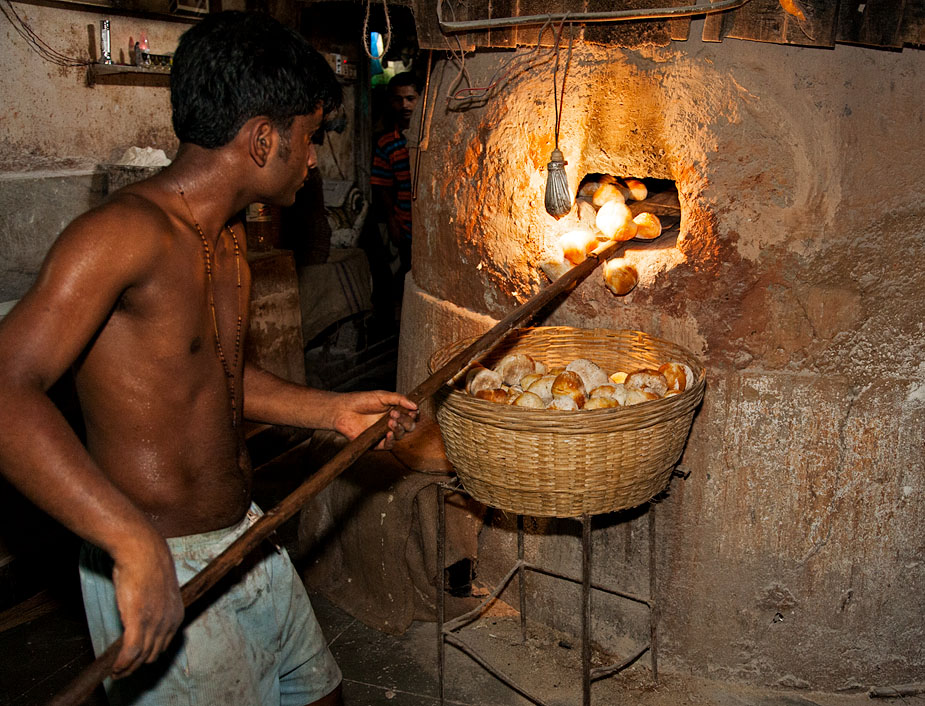

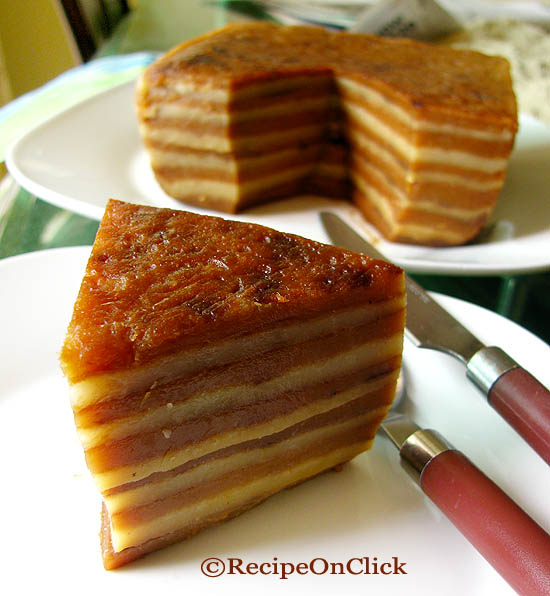






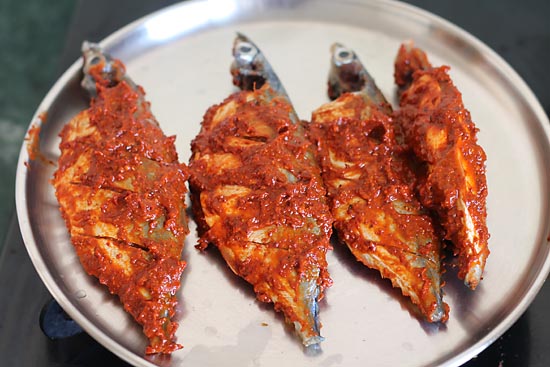
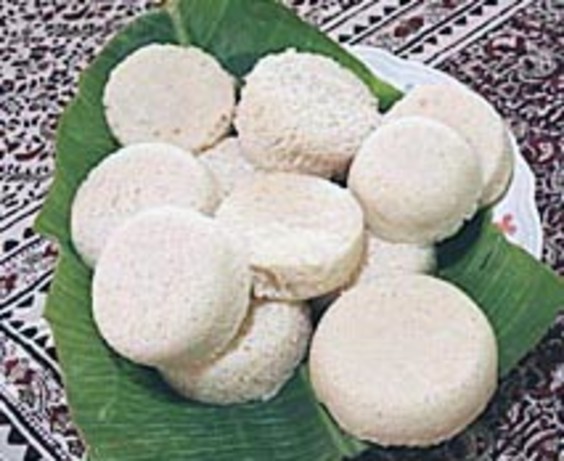

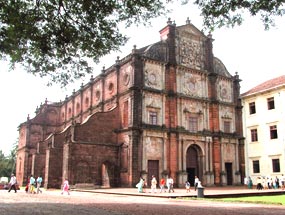





This comment has been removed by the author.
ReplyDelete